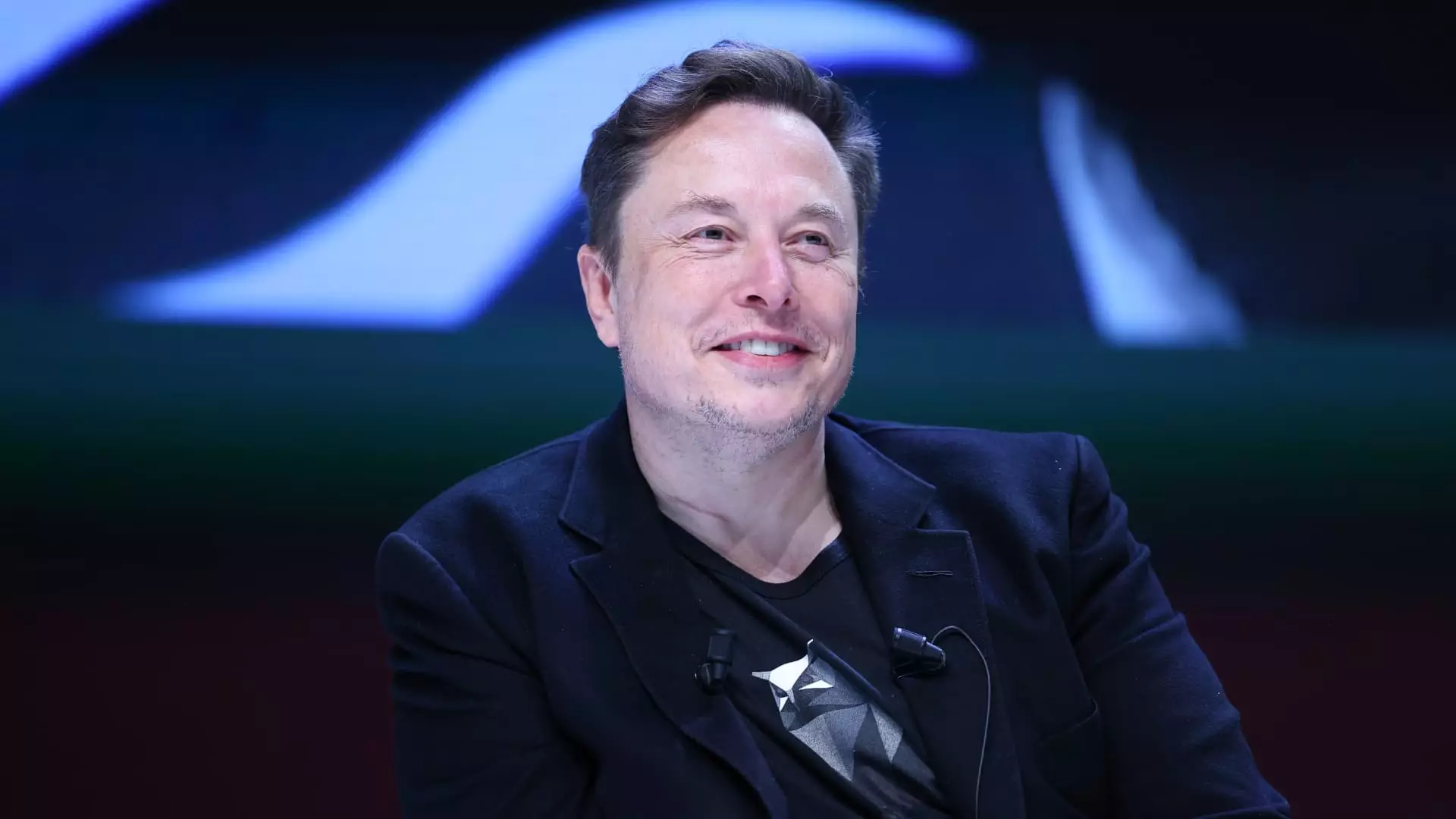The recent surge in Tesla’s stock price underscores a complex interplay of market sentiment, corporate performance, and competitive positioning. Following a remarkable rally, Tesla shares once more grabbed the attention of investors and analysts, primarily driven by the company’s latest quarterly results. This article dissects not only the implications of these financial outcomes but also the broader context affecting Tesla and its performance in the electric vehicle (EV) market.
Tesla’s stock demonstrated impressive momentum, rising by 2.8% on a notable Friday, inching closer to its highest closing value in over a year. As the stock reached around $267.79, it effectively reversed earlier losses from 2024, signaling a newfound optimism among investors. The two-day rally can be attributed to Tesla’s third-quarter earnings report, which generated positive sentiment despite some mixed financial metrics. The company reported a revenue of $25.18 billion, slightly below the analysts’ expiration of $25.37 billion, but still marking an 8% increase from the same period last year.
Importantly, the adjusted earnings per share of 72 cents exceeded expectations of 58 cents, illustrating that Tesla remains proficient in managing cost efficiencies despite the pressures in the EV landscape. Analysts from Piper Sandler raised their price target for Tesla, reflecting confidence in increased deliveries and better profit margins, further fuelling investor enthusiasm. Such price target hikes display a broader trend of recognizing Tesla’s potential, despite contrasting with the Nasdaq’s robust overall gain of 24%.
Tesla’s results were significantly bolstered by $739 million in revenue from environmental regulatory credits and another $326 million from its Full Self-Driving (FSD) system. This duality poses an essential question about sustainability. JPMorgan Chase’s analysis conveyed skepticism regarding the reliance on these credits as a stable revenue source, highlighting a potentially volatile element threatening future earnings stability.
Moreover, FSD revenue reflects the broader challenge Tesla faces in proving the efficacy and safety of its autonomous vehicle features, where CEO Elon Musk constantly forecasts technological advancements that have yet to materialize on time. Musk’s aspirations of achieving 20% to 30% vehicle growth in the next year stem from transitioning to lower-cost vehicles and enhanced autonomous driving capabilities. However, these targets contrast sharply with analyst predictions, which expect a more conservative growth of 15% in the upcoming year.
A fascinating aspect of this rally is its impact on Elon Musk’s financial standing. With Tesla’s stock gains, his net worth soared by approximately $30 billion, emphasizing the stark correlation between executive compensation and market performance. Currently, Musk holds a staggering $274 billion fortune, dwarfing other top billionaires like Oracle’s Larry Ellison. Yet, the past performance of Tesla ought to temper this wealth growth with caution, as the company’s stock remains about 35% shy of its all-time highs in 2021.
Tesla’s future, however, is far from a linear path upward. The firm competes against a wave of newer entrants in the EV landscape, particularly in China, where brands such as BYD and Li Auto are increasing their market shares rapidly. In the U.S., legacy automakers like Ford and General Motors are also ramping up their electric offerings, which could siphon away potential customers from Tesla.
Adding another layer of complexity, analysts have cautioned about Musk’s constantly missed timelines regarding autonomous vehicle deployment. Bernstein highlighted a significant gap between Tesla’s FSD capabilities and those of its rivals. If Tesla cannot deliver on its ambitious projections, investor sentiment may falter.
Tesla’s recent stock rally reflects a combination of strong quarterly performance and a potent mix of investor optimism amidst underlying market pressures and competitive threats. While current stock trends seem favorable, the company faces hurdles that could hinder sustained growth, primarily concerning market competition and product rollout timelines. As Tesla strives to solidify its leadership position in the electric vehicle space, the scrutiny of its financial health and strategic decisions will only intensify. Continuous vigilance on market dynamics, coupled with a clear focus on sustainable growth pathways, will be crucial for Tesla’s trajectory in the volatile world of electric mobility.


Leave a Reply